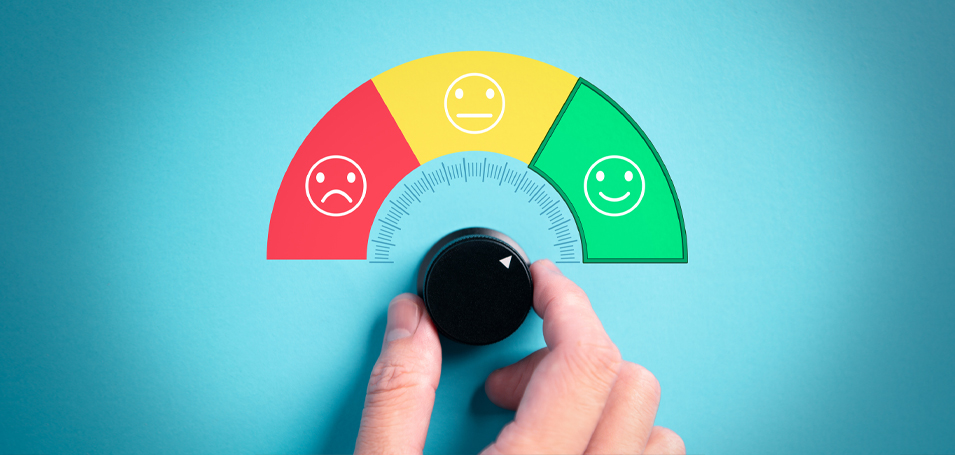We recently partnered with TSIA to discuss the role of Customer Education as part of a holistic digital content strategy. The webinar was packed-full of actionable insights from John Ragsdale, VP Technology Ecosystems at TSIA, and our own SVP Learning Strategies, Daniel Quick.
If you weren’t with us for the live event – you can watch the webinar here, or ask yourself the following 5 questions while you read about the highlights!
1. How ready are you to serve your customers with digital content?
We all know that customer education is becoming increasingly digital, and this is true both before and after the sale. But instead of waiting for the user to sign up to your product, and then creating a content strategy around post-sale learning content, should you be looking earlier in the customer lifecycle?
John Ragsdale mentioned that according to TSIA data, 60% of businesses have some kind of online B2B sales option for their customers. But while the initial sale might happen online, what about education content? Is that being used to drive the sale? “Customers are buying technology differently today, and more than half of businesses are using the freemium model to encourage customers to try before they buy, or get a limited version of the product or service.”
Ask yourself, what digital content are you making available to your users, before they sign on the dotted line?
Daniel Quick believes we are seeing a big shift. “Consumers have different expectations for what education is all about when they interact with a company. We traditionally think of education as something that should be locked behind paywalls and sign-in gates, and that it should be for post-sale customers. However there’s a real opportunity to leverage learning content in marketing channels, SEO-optimize it, make it a central part of your strategy to differentiate your brand through education.”
2. With or without you, your customers are becoming educated. What are they learning about your product?
There’s no doubt that today’s consumer is looking to be educated, searching on Google, checking social media, or browsing your website to learn more about your product before they make a purchasing decision. Thought Industries data shows that consumers are 131% more likely to buy from a brand immediately after they consume early-stage educational content.
It’s therefore essential that you provide prospects with this educational content, giving them digital content that includes what you want them to be learning about your product at this vital stage.
A digital learning strategy can impact customers across the lifecycle. That’s one of the reasons we’re seeing more and more Customer Education leaders working with other stakeholders from Marketing and Sales, to Product and Engineering to support organizational goals at each stage of the customer journey.
It’s clear that the more investments that businesses make in customer education, the greater the impact they see on their business. Thought Industries have found 200% greater improvements in brand loyalty and customer satisfaction in organizations with mature Customer Education functions, when compared to those who are at a lower stage of maturity.
3. What makes a digital content strategy successful?
Daniel spoke to the audience about how Customer Education as a function often reports into Customer John mentioned the importance of thinking about how different content is required at different stages of the customer journey, and Daniel agreed that it’s important to develop a learning strategy that works for each of your customer checkpoints and personas to help them to deepen the relationship with your company.
You can define success for your program in a number of ways, both for your organization and also for your customer. Differentiating between the goals of your company and your user is essential, as they don’t always align.
For example, if your organization wants to open a new revenue stream in order to make more money, it’s unlikely that you have customers lining up with the goal to give you their money. Instead, customers adopt your product and give you their money in pursuit of their own goal. They might not have a direct need to adopt your product, but they have a need that adopting your product will solve. If you can identify that need, you’re more likely to help your customer to achieve success, which will in turn help your organization reach their own goal.
We especially love Daniel’s advice about learning personas, which you can see in the video below.
John commented that when Customer Success Managers create very personalized learning paths, and identify multiple customer personas to cater towards, they see much higher renewal rates and success rates overall. These personas regularly come from the same accounts, because even within a single company, you’re going to have different kinds of customers and approaches to utilizing your product.
4. What do I need to know about creating the education content itself?
Once you have personas, you can start thinking about where different customers will find challenges or see friction, what you can teach them that will improve their outcomes with your product, and what areas of the product are core for your customer to achieve success.
“If you try to teach customers everything, they will get overloaded,” said Daniel. “It’s important to realize that it isn’t only not unrealistic to teach customers everything about your product, it’s not even recommended. Customers will tune out if you try to teach them everything. Your digital content strategy should be keyed to the learning needs that matter most.”
Another great piece of advice from Daniel was to build modular, not monolithic. You don’t need ten topics in a single session, as it’s hard on learners and not practical for busy employees, and has a negative impact on retention. For the business, monolithic courses are also difficult to update and customize. Instead, a modular content strategy allows you to focus on a single learning objective or topic, and content creators can combine different chunks of content together in different ways to create totally new learning experiences.
5. How will I measure the impact of the content I create?
In order to increase investment in your education function, you need to be able to measure its impact. Daniel recommends marking out time to pore through your data, look at CSAT scores, customer comments, completion rates, learning funnels, drop-out rates and how trained customers compared to non-trained customers on important metrics. This meeting was called “iterate”, and it was a specific time dedicated to improving and measuring content.
You can learn more about Daniel’s strategy for measuring the impact of training, and find a comprehensive blueprint for building a Customer Education function, in The Customer Education Playbook, which you can get a copy of here.
There was so much value to be had from this webinar on building a digital content strategy for customer education.
Enjoy the full webinar to learn:
- More insights into learning personas, helping the business to better empathize with the customer and become more proactive about creating effective learning.
- The 80/20 rule, supporting your Customer Education team in deciding what content to create, and what can be supported by alternate options like knowledge base documents or CSM input.
- How to think about the experience of your content, including the 4 E’s, which helps you consider whether your content is Efficient, Effective, Engaging and Economical.
To watch the full webinar, download it on-demand, right here.




